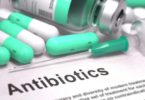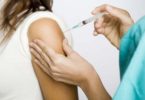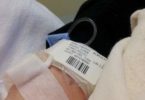What's in this article?
Also referred to as Anisakiasis, Anisakis Infection occurs from the accidental consumption of roundworm larvae, specifically the types of nematodes known as Pseudoterranova decipiens and Anisakis simplex.
When adult forms of Anisakis simplex and Pseudoterranova decipiens inhabit the stomach of sea mammals, the roundworms bury themselves in clusters into the mucosa of the stomach and produce unembryonated eggs which pass through the mammal’s feces.
In water, the eggs become embryonated, forming new larvae within the confine of the egg. The first-stage larvae then enter the molting stage, after which the larvae hatch from the egg and become freely swimming entities. The larvae are then consumed by crustaceans as they swim and within the crustacean hosts, the larvae develop further so that they are ineffective to the likes of squid and fish.

Within the crustacean host, the larvae travel through the intestines to the peritoneal cavity where they can grow up to three centimeters long. When the crustacean host dies, the larvae travel to muscle tissues and are consumed by fish to fish, traveling to new hosts through this means. At this stage, the squid and fish act as hosts for the larvae which are ineffective to mammals.
Anisakis life cycle
Anisakis species have complex life cycles passing through a number of hosts in the course of their lives. Eggs hatch in the sea and larvae are eaten by crustaceans. The infected crustacean is then eaten by a fish or squid. The nematode burrows into the wall of the gut and encysts in a protective coat, usually on the outside of the visceral organs, but occasionally in the muscle or beneath the skin. The life cycle is completed when an infected fish is eaten by a marine mammal, such as a whale, seal or dolphin. The nematode encysts in the intestine, feeds, grows, mates and releases eggs into seawater in the host’s feces.

Anisakis Diagnosis
Diagnosis is usually made by upper endoscopy; stool examination is unhelpful, but a serologic test is available in some countries. Infection typically resolves spontaneously after several weeks; rarely, it persists for months. Endoscopic removal of the larvae is curative.
Anisakis Treatment
Treatment with albendazole 400 mg po bid for 3 to 5 days may be effective.
Anisakis Prevention
Larvae are destroyed by
- Cooking to > 63° C (> 145° F)
- Freezing at -20° C (-4° F) or below for 7 days
- Freezing at -35° C (-31° F) or below until solid, then storing at that temperature for ≥ 15 h, or at -20° C (-4° F ) for 24 h
Larvae may resist pickling, salting, and smoking.






Leave a Comment